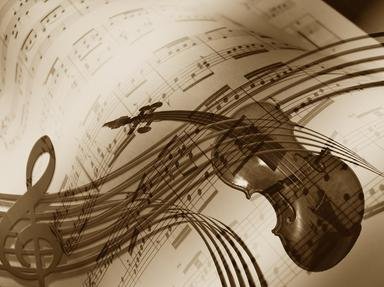Quiz Answer Key and Fun Facts
1. What is the name of this Hawaiian instrument that has its origins in Portugal?
2. Although mainly used in Hindustani and Indian classical music, this instrument gained worldwide notice in popular Western music when The Beatles included it in some of their songs. What is it called?
3. The earliest examples of this instrument were unearthed in Sumer and Ur of Ancient Mesopotamia, dating back to circa 3,500 BC. What is it called?
4. Propped in the corner next to the two guitars hanging on the wall is an electric version of a stringed instrument normally played by sitting with it propped between your legs. Which one of the violin family is it?
5. There are many varieties of modern guitar in the world today. Given the number of strings shown in this picture, what type of guitar is this most likely to be?
6. This Greek instrument comes in two varieties - trichorda and tetrachorda. You may remember it from the Monty Python 'Cheese Shop' sketch. What is it called?
7. Known for use in country, folk, and bluegrass music, this instrument was originally developed from similar African instruments, and was a mainstay of early African-American music. What is it called?
8. With its origins going back to antiquity, this instrument was once the premier solo instrument of the Renaissance. Recognizable for it's 90-degree-bent neck, what is its name?
9. What is this 13-stringed instrument, the national instrument of Japan, named?
10. In addition to being known as a solo instrument, this predecessor of the piano was a key component of the basso continuo of the Baroque era. What is it called?
Source: Author
reedy
This quiz was reviewed by FunTrivia editor
ertrum before going online.
Any errors found in FunTrivia content are routinely corrected through our feedback system.


